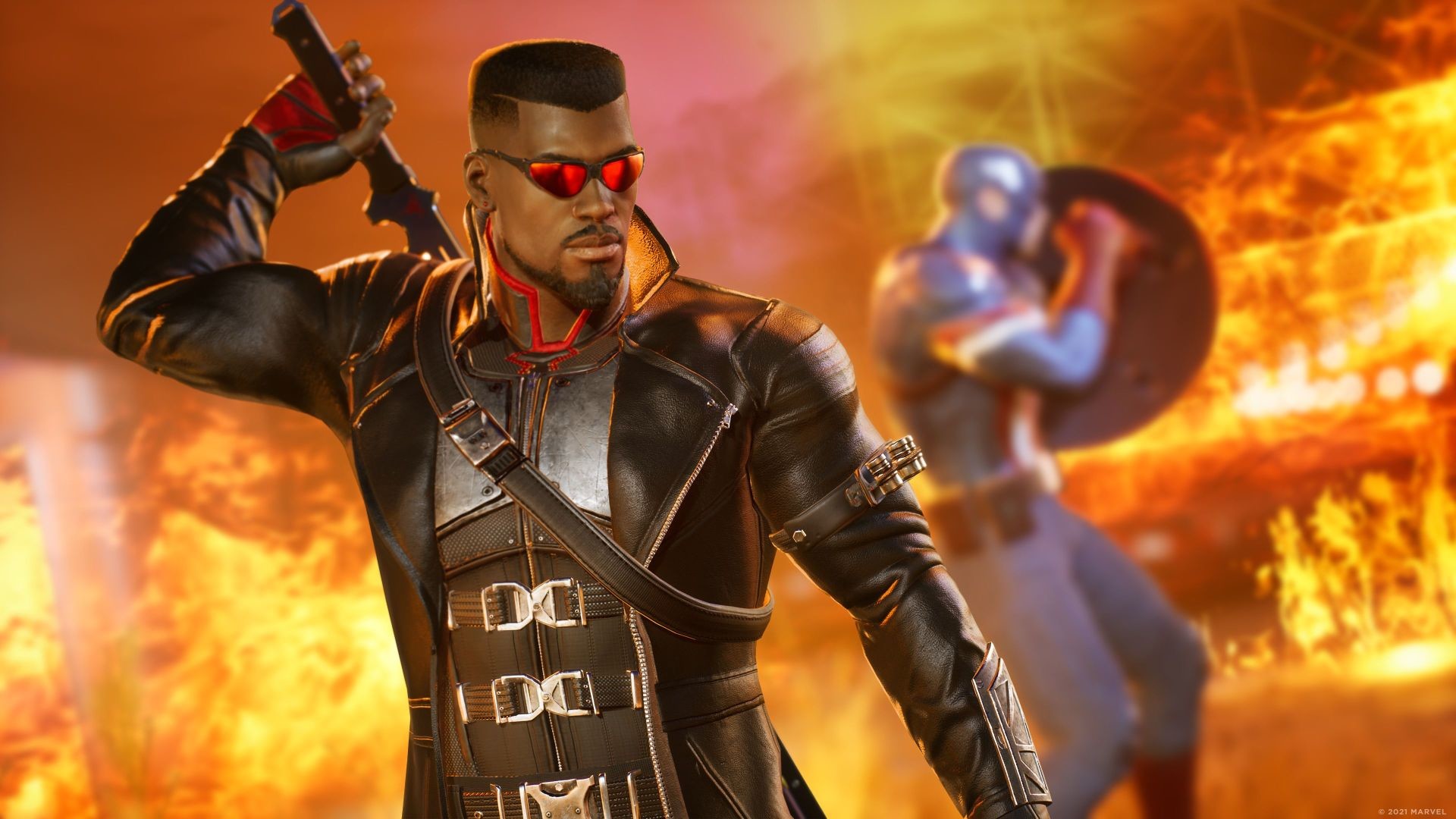Tom's Guide Verdict
Marvel’s Midnight Suns delivers satisfying strategic battles, as well as a full-fledged superhero social sim. The deckbuilding elements give players plenty of room to find their own strategies. The game has some graphical and technical shortcomings, but a strong story and cast should keep superhero fans hooked for dozens of hours.
Pros
- +
Creative premise
- +
Strong strategy/deckbuilding gameplay
- +
Charming sim elements
- +
Excellent voice acting
Cons
- -
Complicated customization
- -
Janky performance
Why you can trust Tom's Guide
In one memorable Marvel’s Midnight Suns mission, I recruited vampire hunter Blade and Sorcerer Supreme Dr. Strange to help me take down a demonically possessed Venom. It was a knock-down, drag-out fight, with reinforcements pouring in and Venom getting up for another round as soon as I took him down. Between drawing ability cards, positioning my characters and managing limited actions each turn, the boss fight was a tense brainteaser, putting my strategic skills and creative thinking to the test.
When it was done, I invited X-Men B-lister Magik to throw on a swimsuit and hang out by the pool, where we talked about all the juicy drama among our superhero housemates.
Marvel’s Midnight Suns is one of the less conventional superhero games we’ve had in a while, and developer Firaxis Games’ gamble pays off. Half deckbuilding strategy/RPG and half superhero social sim, Midnight Suns represents a take on the well-worn genre that we’ve never seen before.
With so many disparate elements coming together, the game can get a little in the weeds, and it may take a few dozen hours for players to puzzle out all its various systems. But overall, the game is well worth a look from both strategy and superhero fans alike, as our full Marvel’s Midnight Suns review will explain.
Marvel’s Midnight Suns review: Gameplay
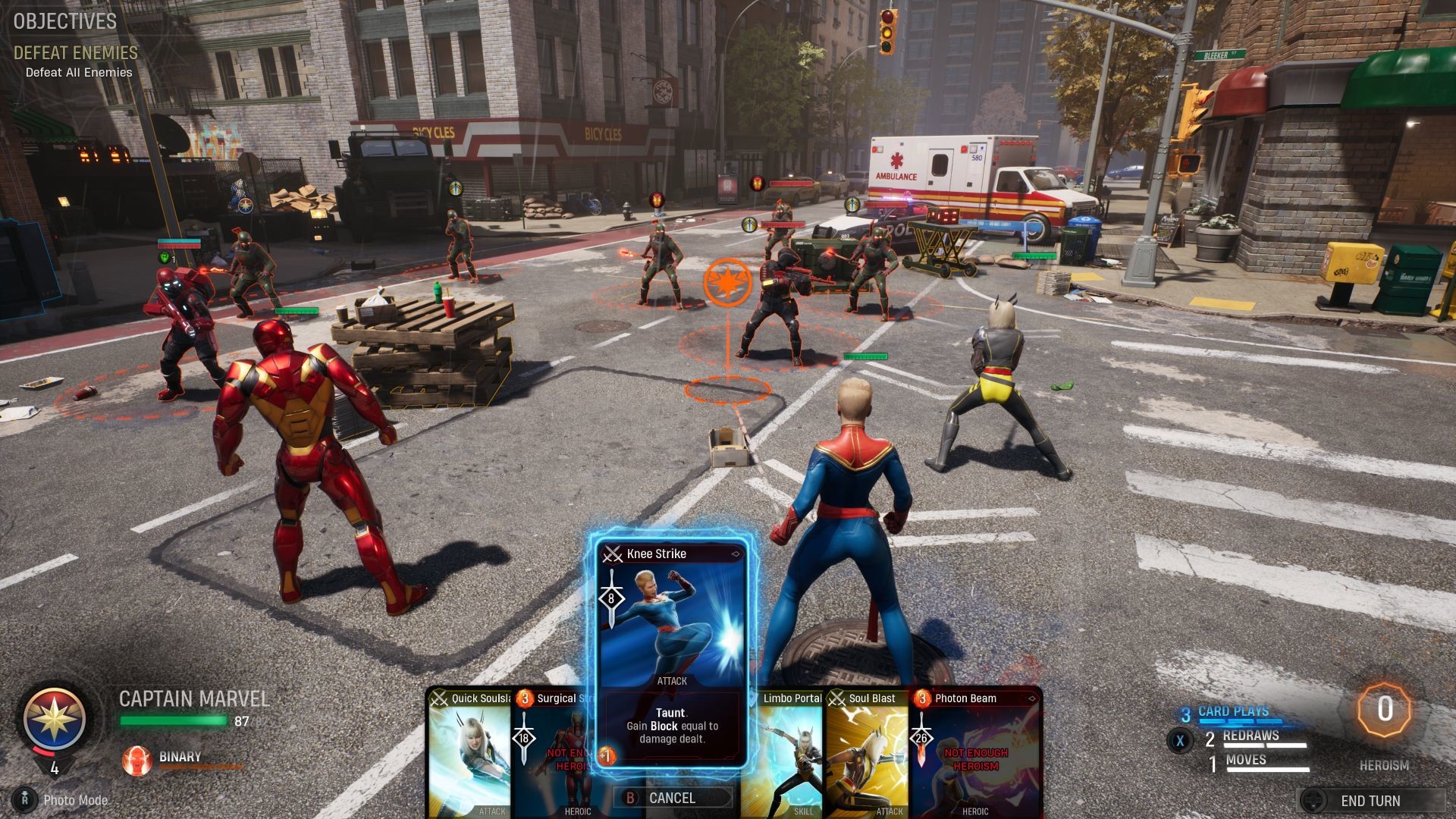
In Marvel’s Midnight Suns, you’ll divide your time more or less evenly between a combat-oriented deckbuilding game and a relationship-building simulation. These contrasting gameplay styles complement one another well, and set an agreeable pace for the whole adventure — which could easily take more than 50 hours to complete, depending on how much side content you want to do.
Platforms: PC (reviewed), PS4, PS5, Xbox One, Xbox Series X/S
Price: $60-$70
Release Date: December 2, 2022
Genre: Turn-based strategy/RPG
At its core, Midnight Suns is a strategy card game with RPG elements. You create an original hero called The Hunter, then recruit a team of 13 recognizable Marvel superheroes, from Captain America to Wolverine. In each mission, three heroes square off against a variety of HYDRA goons, demonic monsters and supervillains in turn-based battles. Each character has a customizable deck of cards, which determine their actions each turn.
Fans of XCOM, Firaxis’ other big strategy series, may find the deckbuilding elements intrusive at first. The cards introduce a level of randomness into the proceedings. After a while, though, you’ll be able to fine-tune your decks enough that you should almost always have a relevant skill at your disposal. Building up character decks is a difficult-but-rewarding process, since you’ll have to customize each character’s arsenal, card by card.
Get instant access to breaking news, the hottest reviews, great deals and helpful tips.
Each turn, you’ll draw up to six cards, which might represent attacks, healing moves, support abilities, specialized movement or other skills. Your team can usually execute three actions per turn, which creates some interesting tactical decisions. Is it more important to buff your team for the next big assault, or rush to the objective at all costs? There are quite a few different skills available, too, from Blade’s chained attacks and life-steal skills, to Iron Man’s long-range blasts that take advantage of redrawing cards, to Captain Marvel’s defensive buffs that require building up lots of attack momentum first.
Strategic resource management is at the heart of every confrontation. You can build up “Heroism” for more powerful moves, or you can spend that Heroism on situational environmental attacks. You can use Quick attacks to dispatch weak foes in a single hit with no action cost, but put too many in your deck, and you’ll find yourself underpowered for boss encounters. You can use your move action to deal extra damage, or to line yourself up for a perfect counterattack, but not both.
Each battle is full of interesting tactical decisions, especially since every hero has a completely different skillset. Three heroes per battle with eight cards apiece can lead to some supremely satisfying combinations — or some completely wasted rounds, depending on what you draw. The interplay of luck, skill and character customization gives every mission a distinctly different feel.
Marvel’s Midnight Suns: Social elements and customization
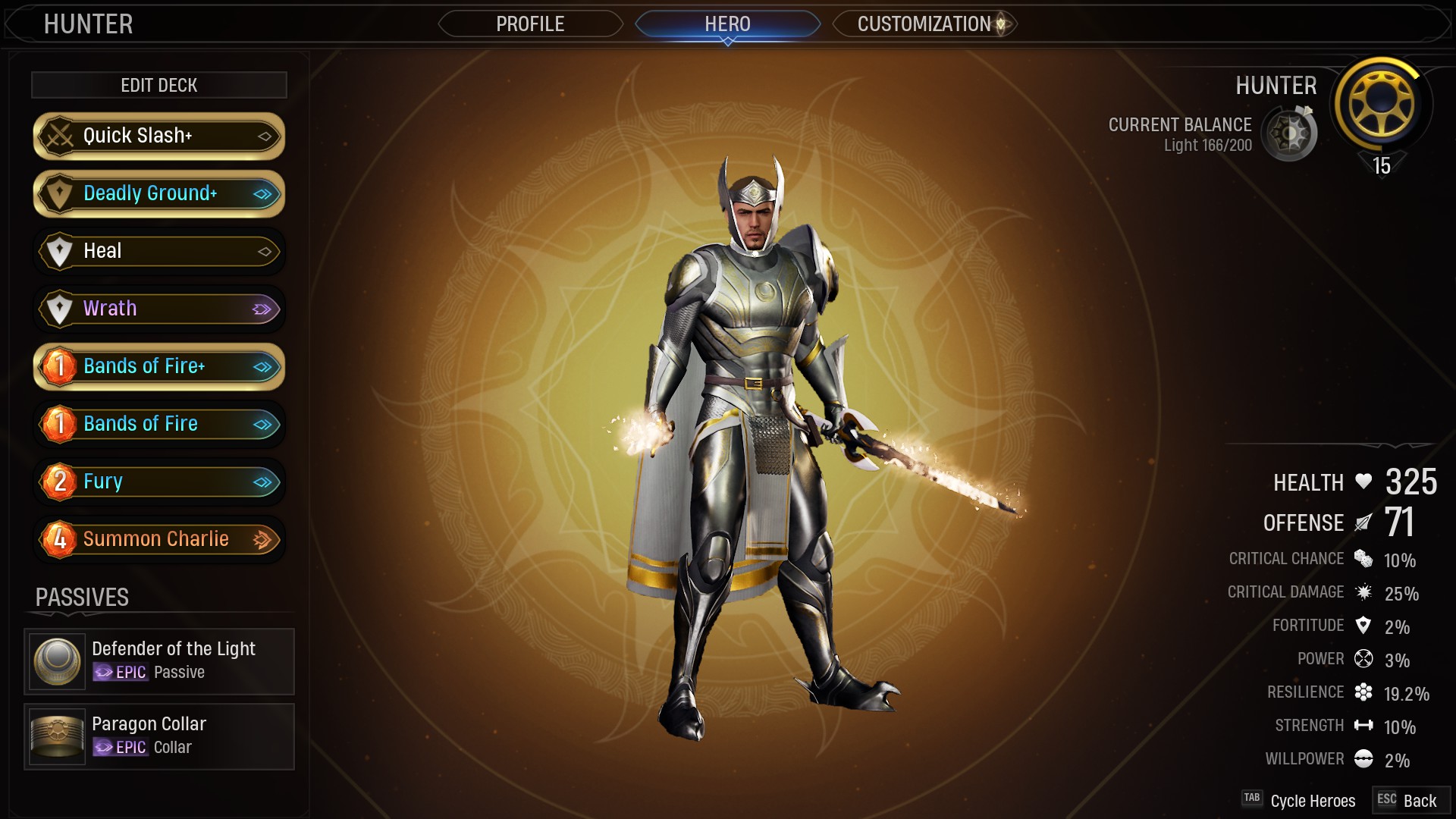
When you’re not fighting off foes in turn-based battles, you’ll spend the rest of your time in Marvel’s Midnight Suns back at the Abbey: a magical hideaway where the superheroes rest between missions. Imagine MTV’s The Real World penned by Stan Lee, and you’ve got the basic idea.
After each mission, you’ll be able to have unique conversations with various heroes, which influence how they perceive you. You can also initiate one-on-one hangouts, join group activities, or shower your teammates with compliments and gifts. Watching campy movies with Nico Minoru is as delightful as it sounds, as is joining a book club with Blade (which he created solely to impress Captain Marvel), or puttering around a workshop with Ghost Rider.
What makes the social elements in Midnight Suns shine, however, is that they have tangible effects on the combat. As you build up friendships with heroes, they’ll develop new abilities and receive new cards. You can use side activities, such as sparring, to help them level up. Iron Man and Dr. Strange also run a Forge, where you can invest the resources you collect in upgrades, such as a hot tub to heal combat injuries faster, or additional copies of your favorite cards. Every character also has a ton of different outfits, from battle costumes, to loungewear, to swimsuits.
There’s a definite “child’s toybox” aspect to “befriending Marvel superheroes and dressing them up any way you want” as a central gameplay mechanic. Whether you find that charming or grating will depend on how seriously you take your superhero stories, but I imagine fans weaned on the comics (like this writer) will adore it.
Between 14 heroes, hundreds of cards, and any number of bonuses and modifications, character customization in Midnight Suns can be a pretty deep rabbit hole. The downside, however, is that Midnight Suns throws a tremendous amount of gameplay systems at you early on, and doesn’t really explain which ones you’ll need to master. With multiple difficulty levels and frequent saves, the game is fairly forgiving, but the customization still hovers somewhere between “complex” and “convoluted.”
Marvel’s Midnight Suns: Story
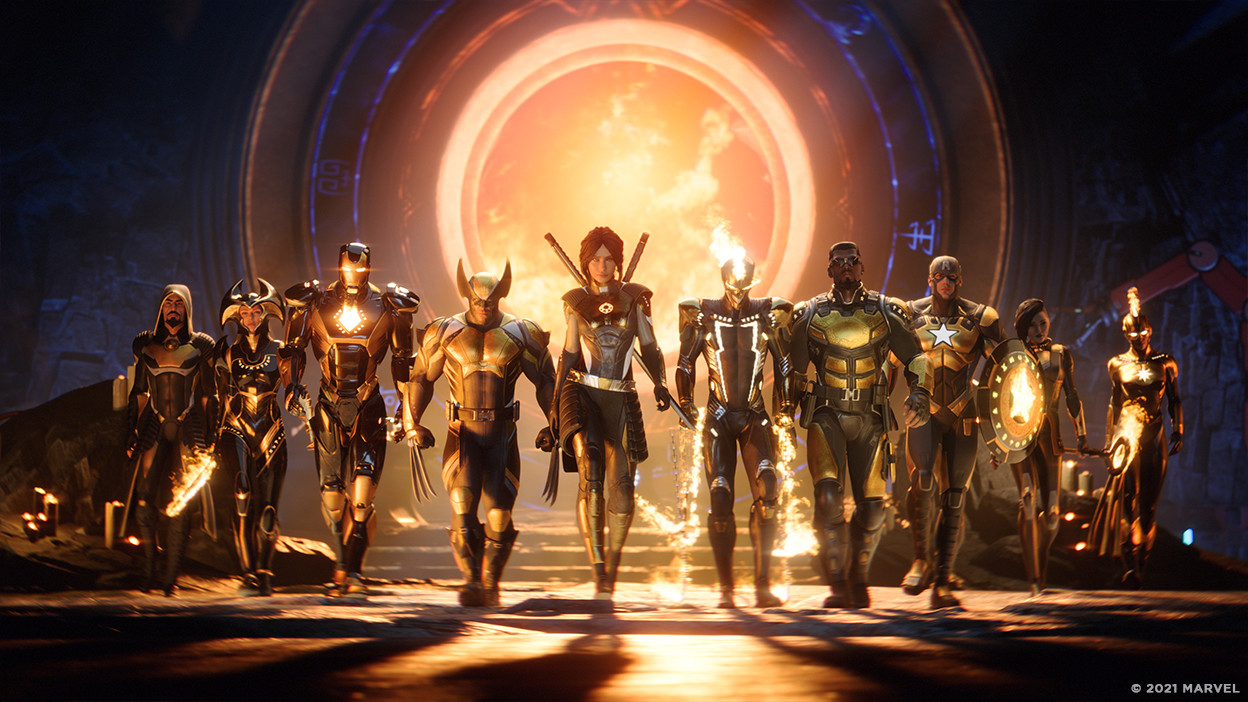
Marvel’s Midnight Suns explores the dark side of the Marvel universe. A powerful demon named Lilith threatens to unleash her acolytes on an unsuspecting world to fulfill an ancient prophecy. A motley crew of Avengers, X-Men and Midnight Suns (a group of young, magically inclined heroes) reawaken Lilith’s child, the Hunter, who stands ready to unite the disparate teams against a common threat.
On the one hand, the story in Marvel’s Midnight Suns is about what you’d expect from a superhero yarn. There’s a world-ending threat; there’s a group of superheroes ready to stop it; there’s a bunch of interpersonal drama along the way. But what sets Midnight Suns apart from something like Marvel Ultimate Alliance 3 is that it explores a facet of the mythos we haven’t really seen in a video game before. The threat here isn’t Thanos with the Infinity Stones or Dr. Doom with a superweapon; it’s a dark, occult threat which requires heroes such as Ghost Rider, Blade and the Scarlet Witch to take the forefront.
What also helps Midnight Suns stand out is just how interesting and well-written the characters are. From Dr. Strange’s verbose exposition to Spider-Man’s dorky digressions, befriending everyone in the cast feels worthwhile. The melodramatic soap opera vibe is much closer to the comics than to the exhausting MCU.
Marvel’s Midnight Suns: Visuals and sound
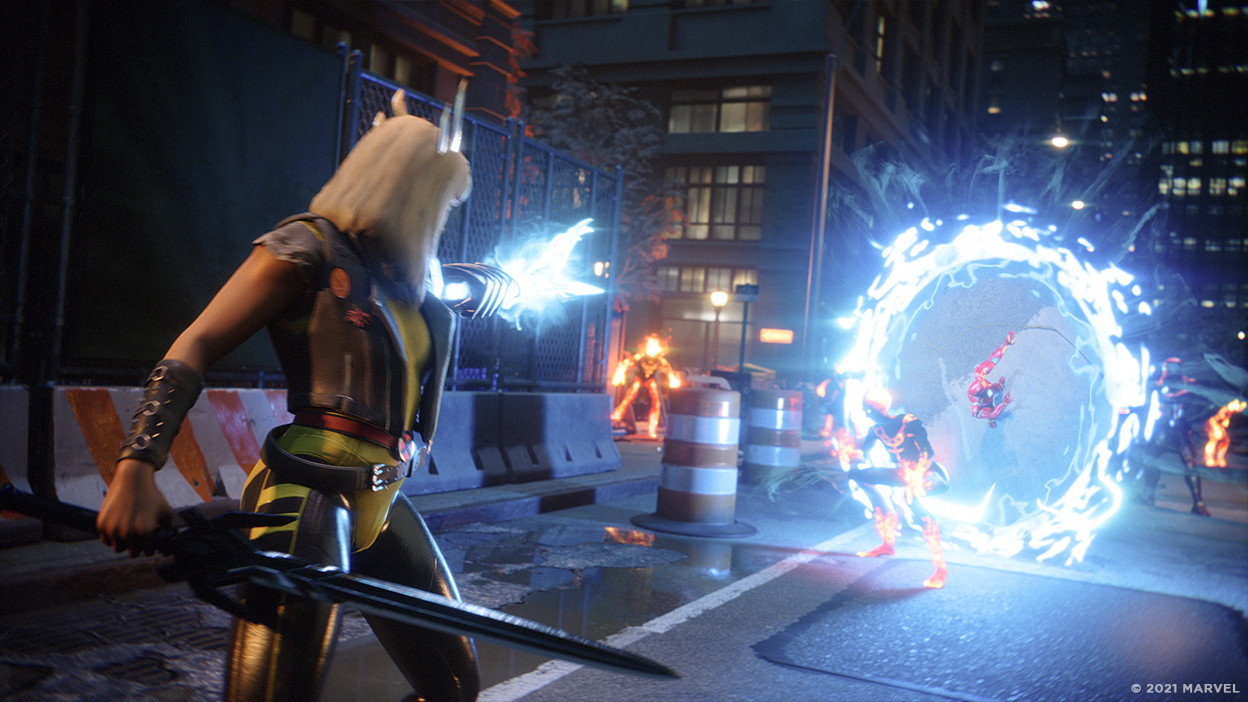
Marvel’s Midnight Suns feels like an early 2000s PC game, for all the good and bad that entails. It’s good, in that it’s a creative idea for a niche audience, with complex systems and an ambitious scope. It’s bad, in that the character models and level design are pretty staid, and that the game doesn’t run well. No matter how you optimize the visuals, the game lags when loading missions, as well as during big attacks. Visual glitches are frequent, whether it’s the map turning into a pixelated mess, or Hunter’s avatar disappearing from menus entirely. Outright crashes are infrequent, but they do happen.
On the other hand, the sound design for the game is excellent. The music in the Abbey sounds sufficiently chill, while the battle music is bigger orchestral fare. The real standout, however, is the voicework. Lyrica Okano from the Runaways TV show reprises her role as Nico Minoru, with the appropriate mix of enthusiasm and standoffishness. Yuri Lowenthal, who played Spider-Man in the PS4 game, also takes on the role here, and his performance is just as spirited as before.
Marvel’s Midnight Suns: Verdict

There’s no denying that Marvel’s Midnight Suns is rough around the edges, between its steep learning curve and uneven performance. But underneath its forgivable flaws, there’s a creative and unconventional superhero adventure, which tries a lot of ideas we’ve never seen in a Marvel game before.
While Midnight Suns is decidedly more niche than the open-world games and action/RPGs we’ve seen from Marvel recently, it’s also a well-executed take on a creative concept. If nothing else, it will make you wonder what other unusual Marvel game concepts might be in the cards.

Marshall Honorof was a senior editor for Tom's Guide, overseeing the site's coverage of gaming hardware and software. He comes from a science writing background, having studied paleomammalogy, biological anthropology, and the history of science and technology. After hours, you can find him practicing taekwondo or doing deep dives on classic sci-fi.
